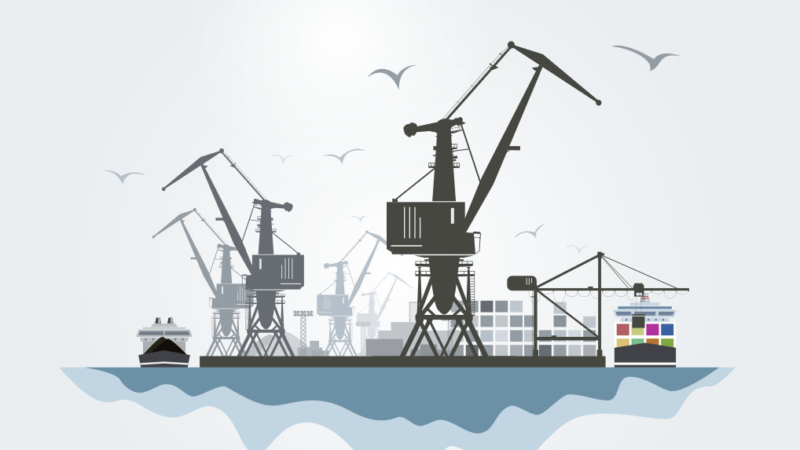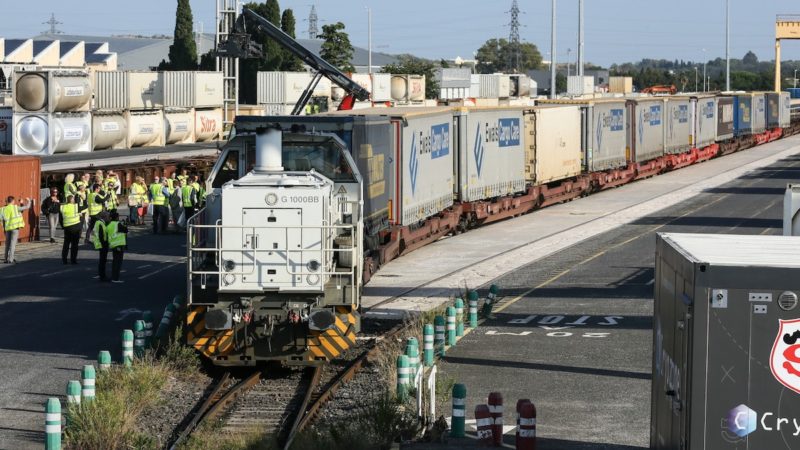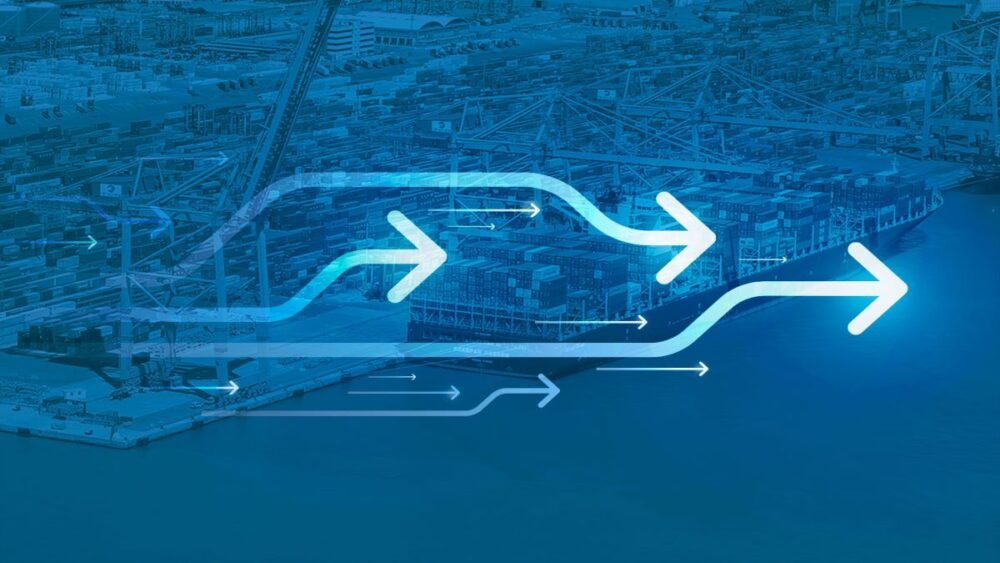 Having a double strategic vision in the short term (2025) and in the long term (until the year 2040) is essential for the future of the Port. (Port de Barcelona / PierNext)
Having a double strategic vision in the short term (2025) and in the long term (until the year 2040) is essential for the future of the Port. (Port de Barcelona / PierNext)
Planning the port of the future: the methodology of the Port of Barcelona to develop its new strategic plan
The presentation of the IV Strategic Plan of the Port of Barcelona (2021-2025), which also incorporates a vision for 2040, took place at the start of the year. The elaboration process lasted more than two years and had the participation of more than 200 experts from the port ecosystem. In this article we explain how it has been developed.

Javier Garrido is a researcher at the Center of Innovation and Transport (CENIT) and PhD student at Port de Barcelona.
 Having a double strategic vision in the short term (2025) and in the long term (until the year 2040) is essential for the future of the Port. (Port de Barcelona / PierNext)
Having a double strategic vision in the short term (2025) and in the long term (until the year 2040) is essential for the future of the Port. (Port de Barcelona / PierNext)
What will the ports of the future look like? No one knows for certain. But it is necessary to face the social, economic and environmental challenges of the coming decades in the best possible way. In this context, the Port of Barcelona has developed its own methodology that has enabled it to draw up its IV Strategic Plan (2021-2025) which, in turn, includes a long-term vision: the Port Vision 2040.
Having a double strategic vision in the short term (in this case, 2025) and in the long term (until the year 2040) is essential for a port for various reasons: due to the high investments and the difficult profitability of some actions, the need to reserve and develop large spaces and, also, due to the the long term horizon of many projects.
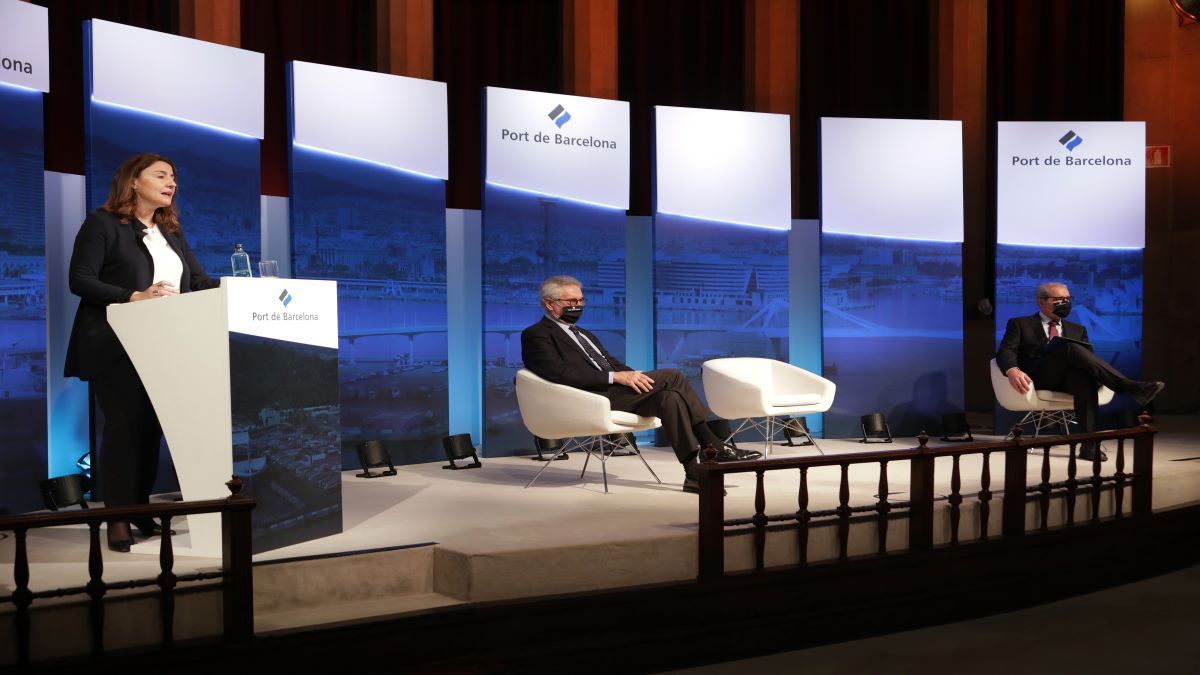
The challenges of designing a medium-long term plan
The design and execution of port infrastructures normally requires periods of up to 10 or 12 years. The lifespan of such port infrastructures can exceed 50 years, which requires considering what factors are required throughout their life cycle before executing them.
As a consequence, ports are obliged to continuously monitor the challenges and trends that can reshape the sector in the short and long term and adjust their roadmap well in advance and with flexibility.
Many ports have already developed their vision for the future by defining their very long-term strategy. For example, the Port of Vancouver developed its Port 2050 initiative in one year with the participation of more than 100 agents and published it in 2010. The Port Development Plan for 2025 of the Hamburg Port Authority was drawn up in 2011 and required four rounds of port dialogue. Also in 2011, the Port of Rotterdam also carried out its Port Vision 2030 and in 2020 it has redefined this document to incorporate new challenges related to energy transition until 2050.
The preparation of these plans requires great efforts and the participation of the entire port community. They are essential to identify change drivers and define the different scenarios that can be developed, thus allowing to prioritize the most appropriate investments.
The Port of Barcelona's innovative methodology to develop its new Strategic Plan
The Port of Barcelona looks to the future and intends to anticipate the changes that will take place in the coming decades, thus guaranteeing the prosperity of society and its surroundings. With this objective in mind, a specific methodology was created in 2019 to prepare the Strategic Plan.
This process has lasted two years and more than 200 national and international experts related to the logistics-port community of Barcelona have participated. Some of them are the port authority itself, concessionaires, logistics operators, end customers, universities, research centers, public administrations, consultants and independent experts.
The Strategic Plan has been drawn up mainly by using internal resources from the port authority, with the collaboration of the CENIT transport innovation center and consulting firms blueFocus and PLA.
The preparation of this IV Strategic Plan, led by the Department of Strategy and Innovation of the Port of Barcelona, has been novel and is based on the Delphi Methodology to identify and quantify impact trends on the port.
In order to guarantee a participatory and enriching process, 5 sectoral focus groups were formed: one to contextualise to analyze global and local trends that affect the sector, and four specific ones for each main segment of the Port's traffic: containers, cruises, ro-ro, and bulk. The first subgroup also analyzed trends that may affect other key activities of the port, such as logistics or nautical activities. A total of ten workshops were held in this regard.
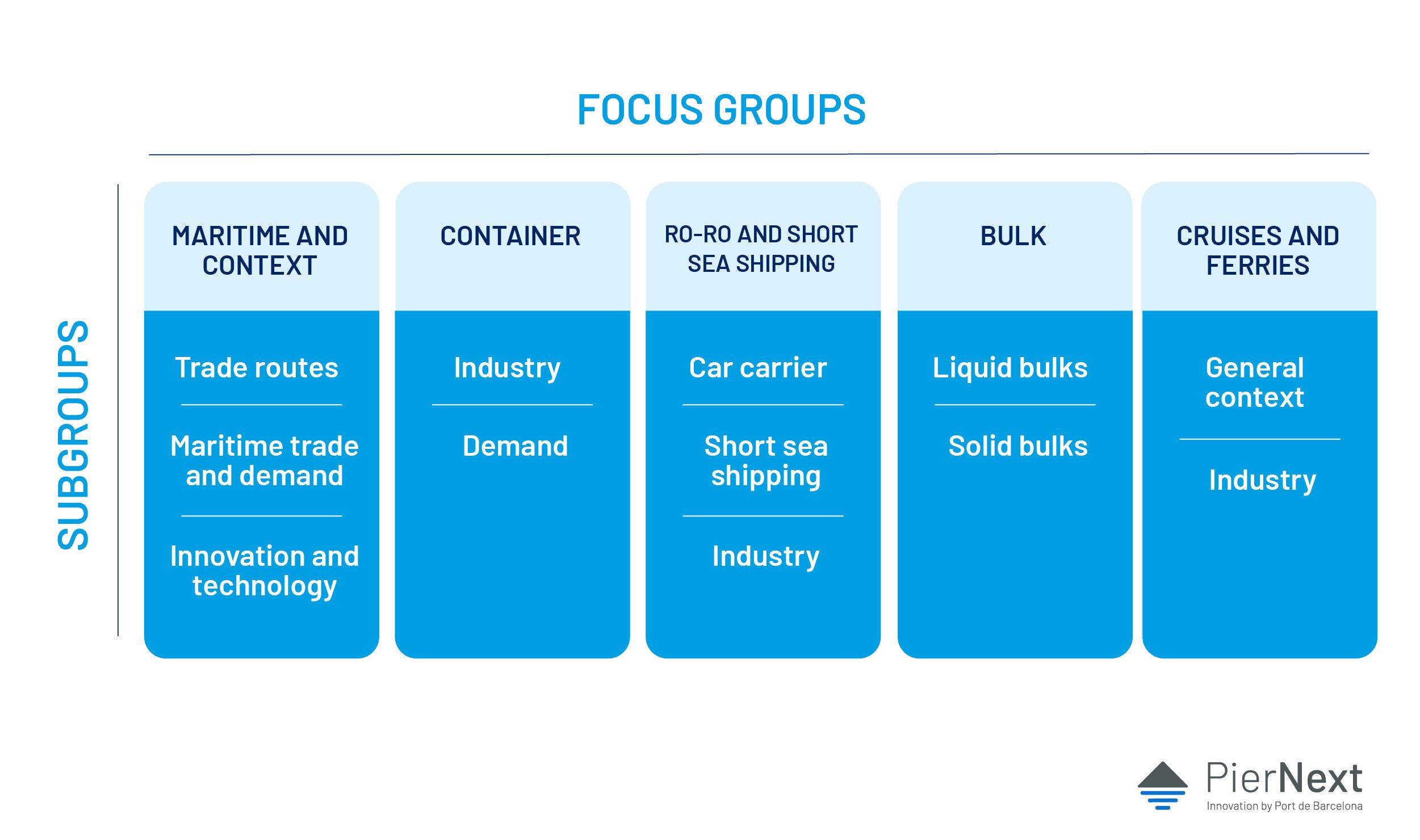
The results on trends and impacts have been contrasted through an external study carried out by blueFocus and PLA and with the collaboration of various international experts from the Port Economics platform. In addition, the CENIT research center has recently presented the results at the Transportation Research Board Annual Meeting 2021 in Washington DC and at the World of Shipping Portugal conference.
Based on these trend results and their impact, a SWOT matrix (Weaknesses, Threats, Strengths and Opportunities) was defined for each strategic traffic segment, which was subsequently consolidated into a general SWOT, which is the one that has been added to the final document.
The mission and vision and strategic lines were also discussed in the workshops and were validated by the port community.
Thus, the Port of Barcelona has defined its mission as: "Generating prosperity in our community, increasing the competitiveness of our clients through the efficient and sustainable provision of logistics and transport services."
And as for its vision, it has defined as: SMART logistics hub (Sustainable, Multimodal, Agile, Resilient and Transparent)
The experts proposed a battery of strategic and operational objectives that have subsequently been incorporated into the Plan.
Ultimately, the Strategy Department compiled all the previous inputs and throughout the last quarter of 2020 drafted the new Strategic Plan. This was initially validated by the entity's Management Committee and officially approved on January 27 by the Board of Directors. At the end of January it was presented publicly.
The action plan has been deployed through three strategic axes (social, economic and environmental sustainability), in twelve strategic objectives and more than 50 associated operational objectives.
The Port’s mission is to generate prosperity in our community, increasing the competitiveness of our clients through the efficient and sustainable provision of logistics and transport services. Its vision is to become a SMART logistics hub (Sustainable, Multimodal, Agile, Resilient and Transparent)
As a differential and innovative factor, each operational objective is associated with a reference project with a 2025 horizon. This reference project facilitates the correspondence of the objectives with the actions to be carried out by the members of the port authority and community. It acts as a realization of an objective that, at times, is difficult to identify for the personnel who work on a day-to-day basis. For example, the strategic objective of Renewable Energy Generation in port land is associated with the following reference project: "Creation of a renewable energy island for self-consumption in the Moll de Pescadors".
Port Vision 2040
This strategic plan also aims to establish a long-term vision for a 2040 horizon. In order to draw this horizon, the scenario planning technique has been used. Thus, four possible scenarios have been defined depending on the global economic and social evolution, the particular evolution of the port hinterland and of Europe in general:
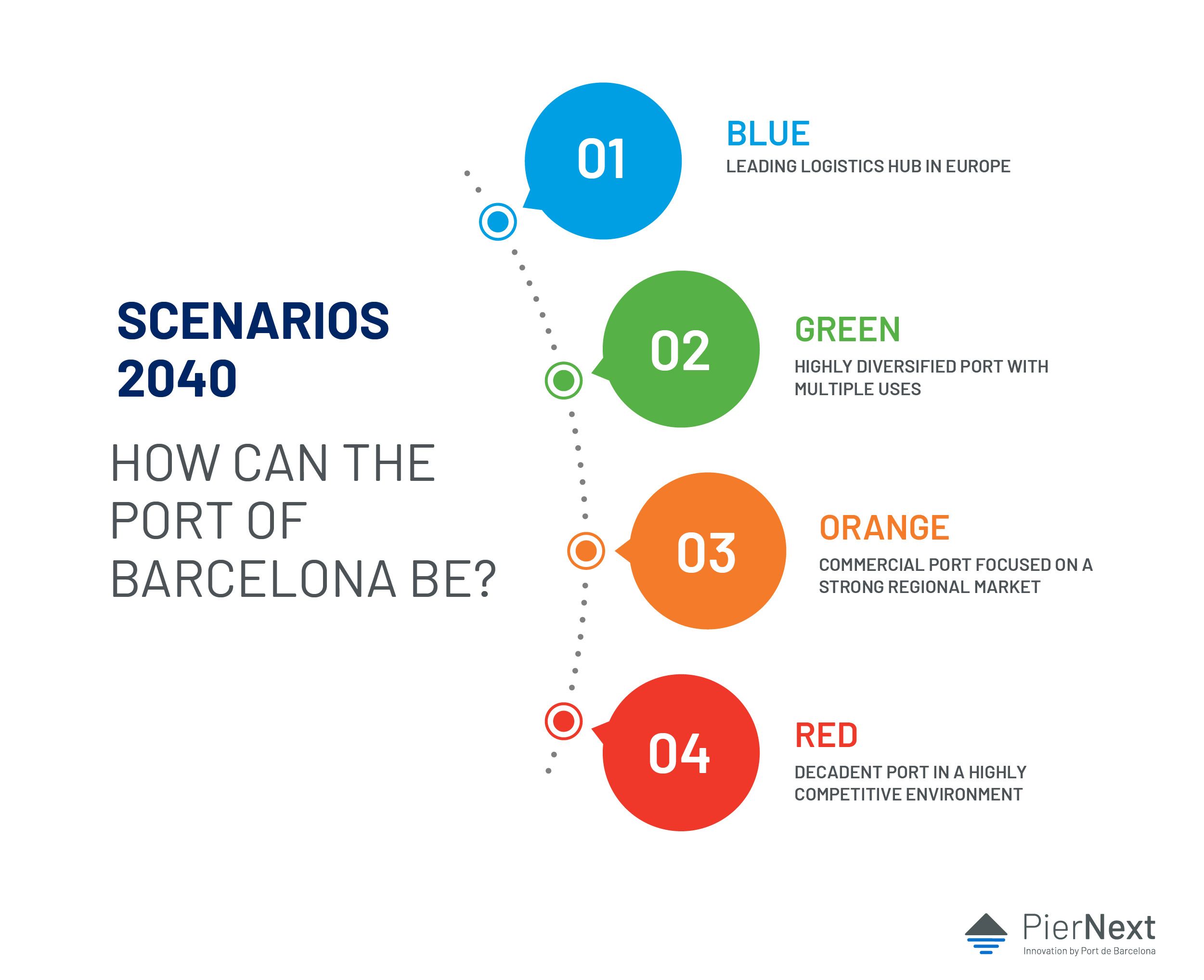
Based on these scenarios, a roadmap has been defined with annual strategic milestones that aim to come closer to the most desirable scenarios and avoid the most negative ones.
In addition, contextual maps have been defined to envision what the port will be like in 2025, 2030 and 2040. These maps define the main changes in infrastructural use that will be appreciated in the next two decades, as well as the possible new business models that will appear in the port of the future.
Obviously, the real scenario that will be achieved will not be any of those detailed but a mixture of some or all of them. The weight that each will have in the future is uncertain. The scenario to be reached depends on external conditions such as the evolution of the world, European and Spanish economies, the scope of digitization in society, the energy transition and the actions that the Port of Barcelona can carry out.
However, the policies and decisions of the logistics-port community of Barcelona have a certain capacity to modulate trends, and it is necessary to make the right decisions that bring us closer to the desirable future scenarios.



